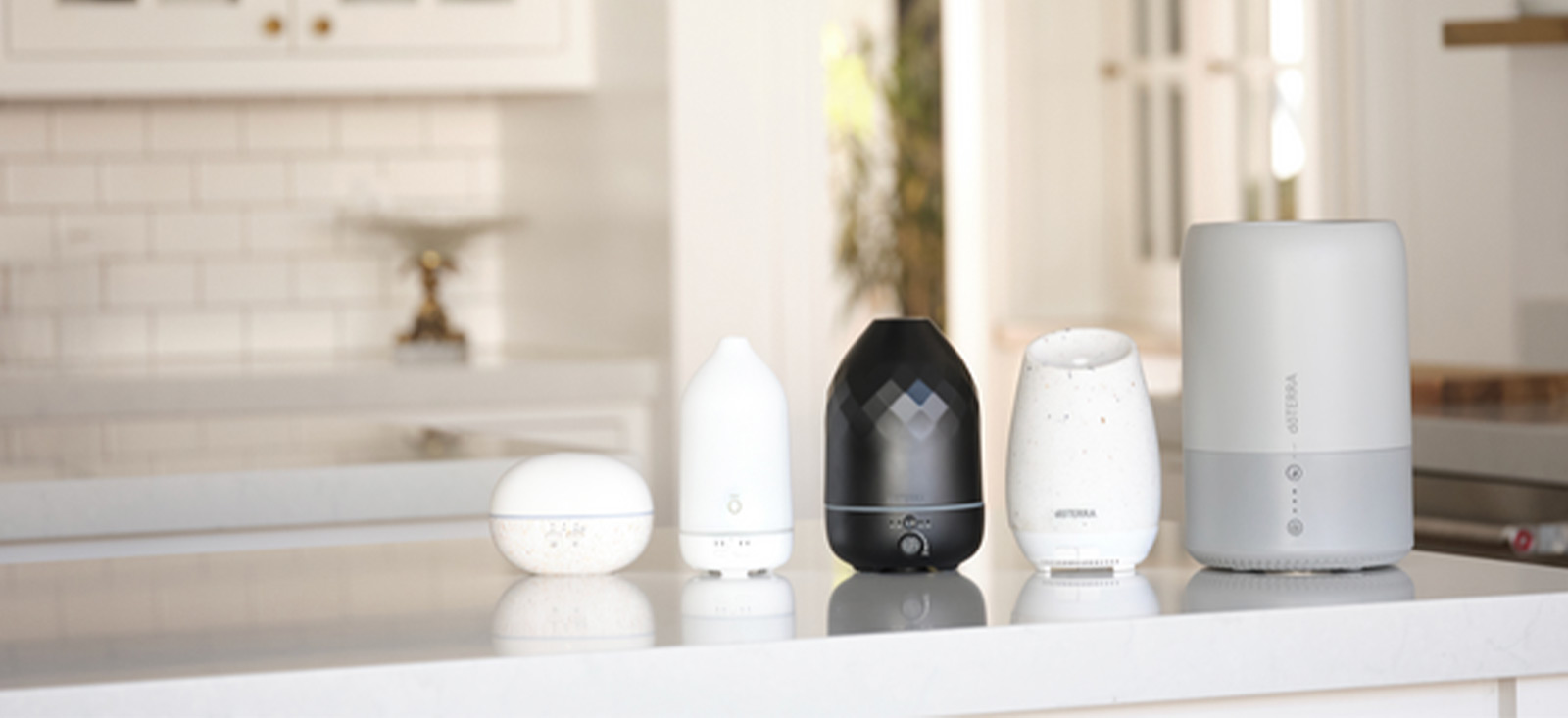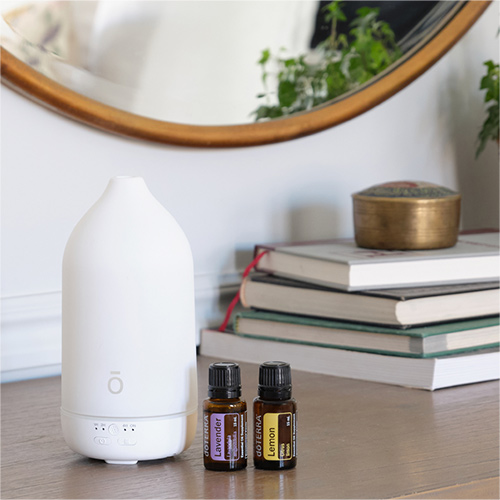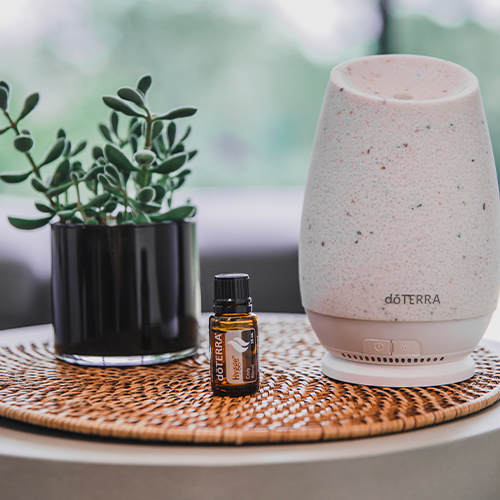Which Diffuser Should I Use?


An Essential Oil Diffuser Guide
Essential oil diffusers are convenient, mess-free tools that let you take advantage of the aromatic benefits of essential oils. Use a diffuser to fill your home or workspace with uplifting, energizing scents or cultivate a calm space at bedtime.

Curating a custom atmosphere is easy with a diffuser, but you may be wondering which is best. Here’s everything you need to know before buying one.
Types of Essential Oil Diffusers
There are four diffuser types: nebulizing, ultrasonic, heat, and evaporative. Before you can decide which is best for you, you need to know how each diffuser works and the pros and cons.
Nebulizing Diffusers
Nebulizing diffusers break an essential oil into tiny particles through a high-velocity, pressurized airstream and jet nozzle. The essential oil is released in a fine mist that’s easily inhaled and enjoyed. Nebulizing diffusers don’t alter an essential oil’s chemical composition or scent, diffusing the entire compound at once instead of in stages. (Some diffusers release the lighter components first.) The limited-edition doTERRA Bubble Diffuser is a great example of a nebulizing diffuser.
- Pros: Nebulizing diffusers use no heat or water, dispersing the entire essential oil into the air for optimal benefits.
- Cons: Nebulizing diffusers are often the most expensive to operate. They use much more essential oil than other diffusers. Some models are also noisy compared to other kinds of diffusers.
Ultrasonic Diffusers
These popular diffusers use electronic frequencies to create a fine mist from essential oil and water. A small disk under the water’s surface creates ultrasonic vibrations that break an essential oil into micro particles. Most doTERRA diffusers, like the Volo® Onyx and Marble or Laluz®, are ultrasonic.
- Pros: Ultrasonic models are quiet, don’t use heat, and only require a small amount of essential oil. They can also act as both a diffuser and humidifier, which is helpful if you live in a drier climate.
- Cons: Only a fraction of the mist is essential oil. Existing air currents can impact the effectiveness of dispersion. Plus, you may not want to diffuse more water into the air if you live somewhere humid.

Heat Diffusers
As the name suggests, heat diffusers evaporate essential oils with warmth. Some heat diffusers mix essential oils with water, while others employ high temperatures for a stronger aroma. The best heat diffusers operate at lower temperatures to avoid drastically changing an essential oil’s chemical composition.
- Pros: Heat diffusers are economical, efficient, and silent.
- Cons: The heat can change an essential oil’s properties at the molecular level, potentially altering or lessening its aromatic benefits.
Evaporative Diffusers
Evaporative diffusers have a fan that blows air through a filter, such as an essential oil–infused tissue or a pad, quickly evaporating the essential oil and dispersing it through a room. Evaporative diffusers release lighter essential oil components first.
- Pros: Wind-blown diffusion quietly and quickly spreads an aroma through a room.
- Cons: An essential oil’s aromatic benefits may lessen because the chemical components are diffused at different times.
Regardless of the diffuser you choose, essential oil aromas have the potential to create uplifting, calming, or energizing environments in your home. Each diffusion method will help you enjoy the stunning scents of these gifts of the earth.
Ready to buy an essential oil diffuser? Check out all the diffusers doTERRA offers below:
Need tips for cleaning your diffuser? Read this blog post about essential oil diffuser maintenance.
doTERRA Diffuser | New Volo Marble and Onyx Diffusers
Diffuser Blend Using Grapefruit and doTERRA Cheer® Essential Oils
-
已複製到剪貼簿
- 下載


